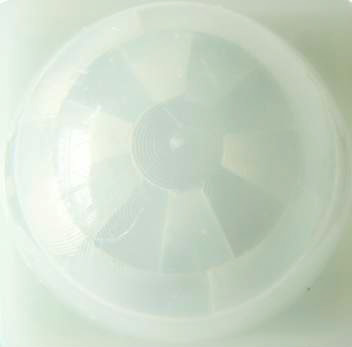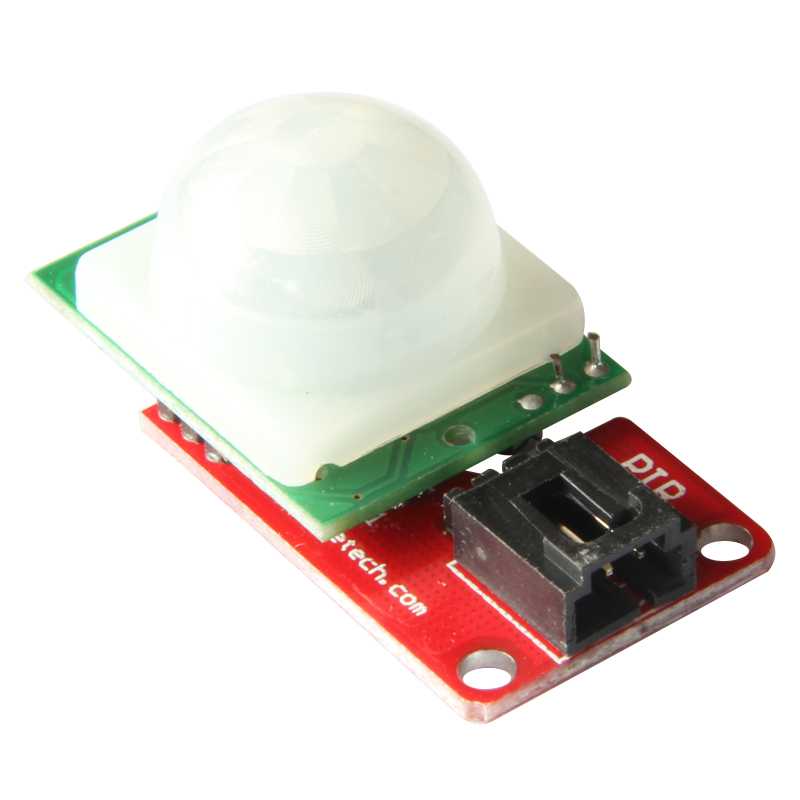Hello, everybody, it is really a great week, not only because we have released our Geeetech Rumba but also because our clearance activity is in full swing, our main products in the clearance are different kinds of modules. In order for you to have a better understanding of those items, I am going to give you some detailed introductions. Let’s start from the PIR Body Movement Sensor Module.
How the PIR works
Passive infrared motion detectors have virtually taken over the #1 position in popularity among all competing space and motion detector technologies. This is in no doubt due to the sheer simplicity of its principle of operation.PIRs sense a change in the ambient energy of the area they’re protecting by being quite sensitive to the energy produced by an intruder in motion.
Infrared Energy
The kind of energy referred to is known as infrared energy and it’s contained in everything on earth. The most common source of it is the sun, but objects needn’t be warm or hot or bright in order to have it. An object’s temperature is not the only thing contributing to its overall IR energy content. Color, temperature and texture are all additional factors which determine its total energy level.
Why use the term “infrared” to describe such energy? We think of most energy sources as providing heat, and they do. Those that provide high temperatures, such as energy produced from welding or photo-flood lamps or rocket engines, for examples, also produce light energy of a color that we can see. There are also energy sources that don’t produce quite that much heat and thus create no visible color or light. They emit infrared energy – “Infra” meaning below our ability to detect it visually, and “Red” because this color represents the lowest energy level that our eyes can sense before it becomes invisible. Thus, infrared means below the energy level of the color red, and applies to many sources of invisible energy.
PIRs sense energy in the Far Infrared region-an energy band well below anything else visible. One of the best sources of Far Infrared Energy is people. Our body temperature is rather warm and rests around 98*F, yet no light is evident from the release of this energy. Even though such energy can’t be detected by the eye doesn’t mean it won’t behave in a similar manner to visible light (but only with a special front-surfaced mirror) and it can be focused, too (but only through a special lens, made, fore example from germanium). Because infrared radiation is unable to penetrate most substances, including glass, these special materials are required. Although this might be considered a disadvantage-it’s ideal for security purposes, making the PIR detector extremely stable and free from unwanted conditions.
Passive Level
The “P” in PIR stands for Passive, meaning that this detector contributes no energy of its own, but simply is sensitive to the infrared energy level present in the location it’s protecting. For this reason, many PIRs can be used together within the same area without interfering with each other.
Because of its design, the PIR’s optical system through which it “sees” the environment, defines the area(s) of protection so that the detector receives only the IR energy it “sees” while random energy sources outside of the area(s) do not become a concern.
Passive Infrared Detector
When any moving source of IR energy (like a person) crosses the detectors “field of view” that have been setup by the PIR, a rapid change of such energy is introduced in one or more of the Detection Zones implied in the figure. Compared with the unaffected zones of the PIR, this is a significant increase in IR energy level and will result in a reaction in the device, typically the transferring of a pair of electrical contacts and the illumination of a walk-test LED in the face of the unit.
What the PIR really reacts to is the difference between the existing, ambient level in an area, and the change in such energy that a moving object introduces. How the detector really “sees and feels” these changes causes us to look at a small sensing component within the PIR called a Pyroelectric Sensor.
IR energy is delivered to the Pyroelectric Sensor by means of a mirror-like reflector or through a lens. When a mirror is used, each of the facets of the reflector views a certain area (field of view) and bounces the IR energy it receives onto the Pyroelectric Sensor within the detector. In the case of the Lens, its segments overlook the protected area and similarly pass the IR energy on to the sensor directly behind it.
Field of View
The field of view of a detector would look like “beams” reaching out into an area and stopping at the nearest solid object, like a wall, floor, or piece of furniture or equipment. Areas between the “beams” are called Dead Zones and detection in these areas would not be possible. Now, here’s where the operation becomes a bit more complicated. The total IR energy from each Field of View is focused on the Pyroelectric Sensor, where it’s all accumulated and “summed up.”
However, the Sensor, to make this design work, has to be modified a bit. For purposes of illustration it’s best to think of the Sensor as one having Dual-Elements. Think of the sensor as tow sensors in one. One of these elements, when struck with IR energy will generate a Positive Pulse. The other element will produce a Negative Pulse. If the IR energy reaches both elements simultaneously, the two pulses, because they occur at the same time and are equal and opposite will cancel out. This provides us with the advantage of not permitting a gradual temperature change in the total area or within any one zone to cause a false activation.
If we consider the process of an operating unit from the point-of-view of any such mirror facet, we’ll find that normal room IR energy falling within the viewed area is radiated back to the PIR, where it’s reflected onto the Dual-Element-Sensor. Since no change in IR energy is evident here, neither of the two elements will produce a pulse.
The real test comes when a rapid change in energy occurs, such as when a moving source of IR energy (an intruder), enters one of the Fields of View. Because we’re dealing with a moving body, it’s inevitable that he’ll cross into the detector Zone at some point, first triggering on half of the sensor and then the other. Since the zones are not activated simultaneously, the Negative pulse appears first, before it can be canceled by the positive pulse. This results in an activation, causing the PIR’s Walk Test LED to light, and results in the transferring of the alarm contacts. If the system is armed, an alarm will result. This is essentially the principle of operation in use with Passive Infrared detection.
ok ,so much for the PIR sensor, hope you like it, what do you eant to know next time? tell us in your assage.







